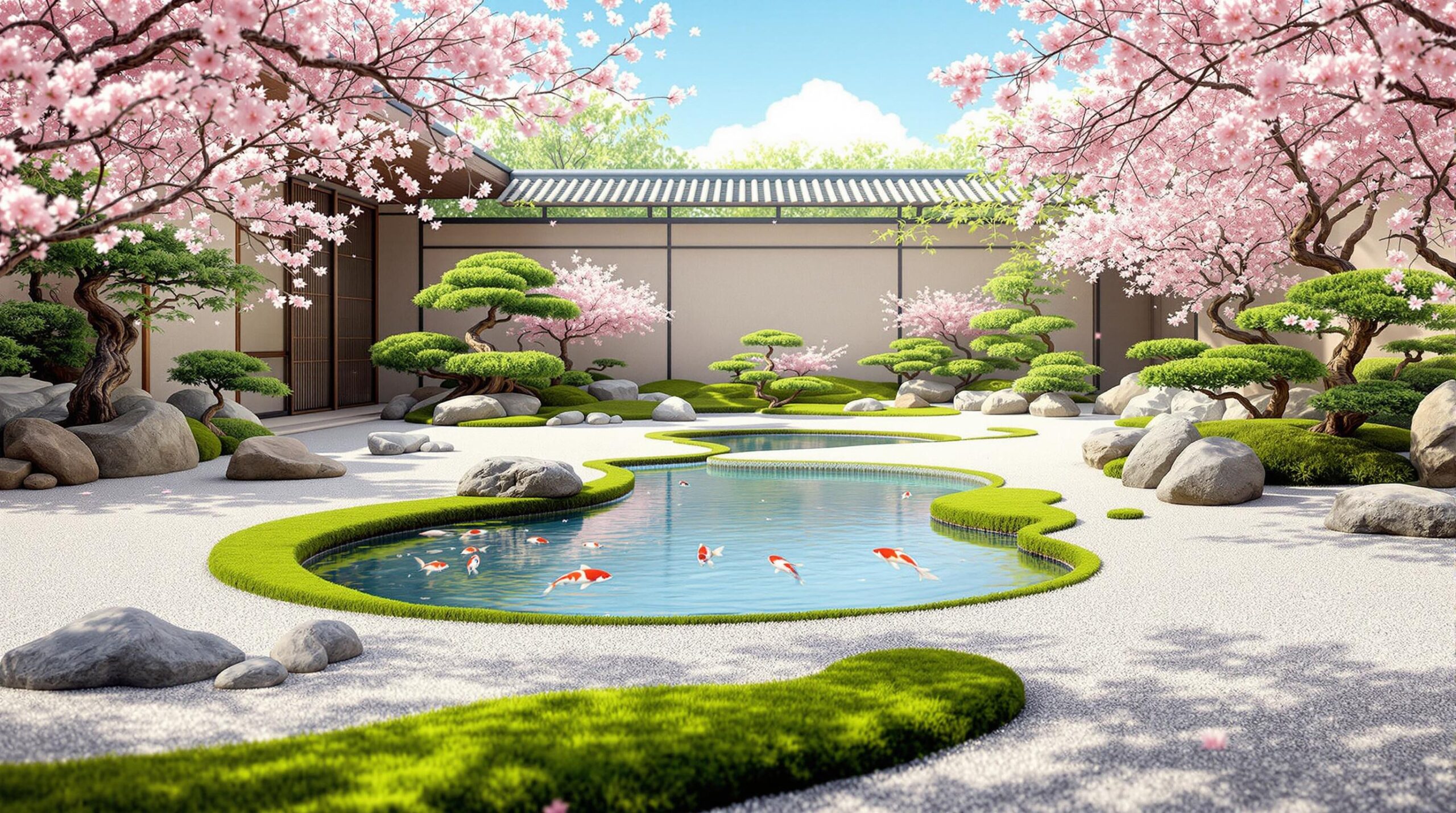Zen gardens embody tranquility through a delicate balance of natural elements, focusing on simplicity and serenity. These spaces, steeped in Japanese culture, have evolved to offer a retreat amid our busy lives. Understanding the principles of design, maintenance, and selection of materials can help create backyard sanctuaries that foster relaxation and mindfulness. Explore the fundamental aspects of zen gardens and the steps to craft your serene escape.
Understanding the Essence of Zen Gardens
At their heart, Zen gardens serve as peaceful retreats, inviting us to slow down and connect with nature. These minimalist landscapes incorporate elements such as rocks, gravel, and limited vegetation, originally designed by Zen Buddhist monks for meditation purposes. The three core principles that guide the formation of these tranquil spaces are naturalness, simplicity, and austerity. The intentional placement of stones symbolizes permanence and strength, essential for creating a harmonious haven.
Fundamental Elements of a Zen Garden
Creating your zen garden requires an understanding of its key components:
| Element | Description |
|---|---|
| Walls and Gates | Constructing custom boundaries enhances privacy while framing your serene space. Traditional materials like bamboo or wood can provide both a sturdy and aesthetic touch. |
| Zen Plants | Choosing moderate vegetation such as evergreens, bamboo, and Japanese maples promotes harmony without overwhelming the scenery. Bonsai trees can serve as exquisite focal points. |
| Rock and Gravel Features | Rocks symbolize mountains and islands, while raked gravel can mimic the appearance of water, conveying serenity. Patterns raked into gravel create engaging visual effects. |
Steps to Create Your Own Zen Garden
Embarking on the journey to create a zen garden begins with mindful planning. Below is a streamlined guide to help you establish your own tranquil outdoors:
- Choose an Area: Identify a calm, flat space that feels secluded and serene.
- Gather Inspiration: Look into various Zen Garden Supply sources, collect ideas, and curate what resonates with your vision.
- Incorporate Zen Principles: Focus on simplicity, harmony, and stillness as you design your space.
- Plan Your Layout: Sketch the positioning of rocks, plants, and paths to enhance visual balance.
- Create a Welcoming Atmosphere: Integrate seating areas for meditation to foster peace.
Personalizing Your Zen Garden
While traditional gardens embrace minimalism, feel free to reflect your personal style. Adding unique elements such as water features, various plants, or sculptural items can enhance your personalized Harmonious Haven. Ensure to maintain a visually coherent color palette to enhance the calming effects.
Maintaining the Tranquility of Your Garden
Regular upkeep is crucial in sustaining the beauty and tranquility of zen gardens. Here are tips to maintain your Garden Tranquility:
- Leaf Removal: Regularly clear fallen leaves to retain clean lines and visual clarity.
- Weeding: Consistent weeding is essential to prevent unwanted growth from overshadowing your designated plants.
- Pruning: Regularly prune plants to maintain healthy shapes and prevent overcrowding.
Seasonal Maintenance Tips
Seasonal changes may require specific actions to uphold the beauty of your garden. Here’s a brief breakdown:
| Season | Maintenance Task |
|---|---|
| Spring | Prepare for blooming by pruning and planting new vegetation. |
| Summer | Focus on watering and inspecting structural elements for heat exposure. |
| Autumn | Collect leaves and assess plant health before winter. |
| Winter | Protect delicate plants and conduct structural checks. |
Elements of landscape design: balancing aesthetics and function
Transform Your Backyard into a Peaceful Retreat
As we embrace the notion of mindfulness and personal wellness amidst our busy lives, a zen garden represents a perfect opportunity to cultivate calmness and reflection. Whether choosing to incorporate simple plants, graceful rocks, or tranquil water features, you can create an inviting atmosphere. By exerting intentional effort in design and maintenance, your outdoor area can flourish into a Calmscape that invites restorative peace.
Frequently Asked Questions
What plants are best suited for a zen garden?
Consider using slow-growing evergreens, bamboo, and aromatic herbs like lavender or thyme. These plants promote serenity and can blend seamlessly into the landscape.
How can I incorporate water features into my zen garden?
A small pond, fountain, or water basin can introduce relaxing sounds of flowing water, enhancing the calming atmosphere.
What is the role of rocks in a zen garden?
Rocks serve as symbolic representations of mountains or islands and can be arranged to create visual interest while providing a focal point.
How often should I maintain my zen garden?
Regular maintenance is crucial; aim to do light upkeep weekly, with more intensive tasks according to the changing seasons.
Can I personalize my zen garden with additional elements?
Absolutely! While tradition emphasizes minimalism, personal touches can enhance your space—such as unique sculptures or decorative pathways—in moderation.















